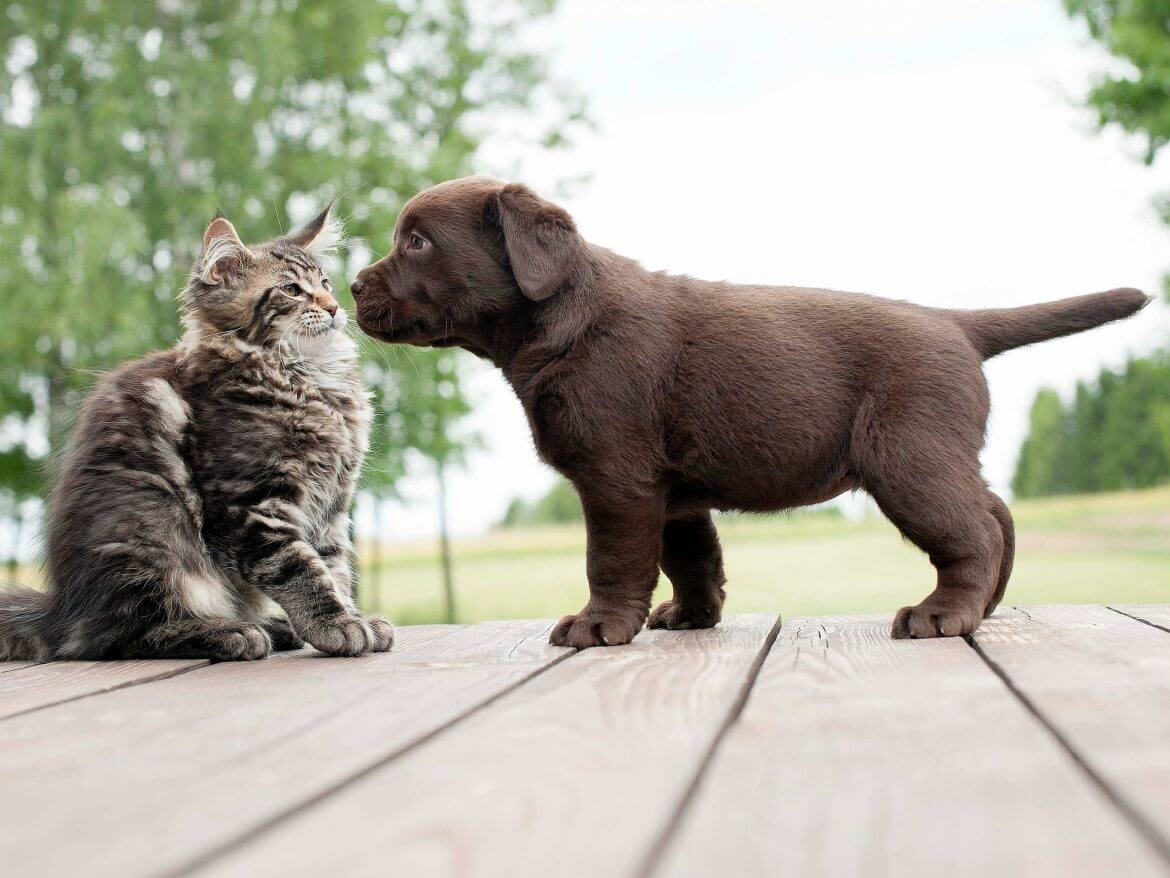Hello – Puppy Meet Cat
PIA Australia
June 8, 2016
Nadia Crighton shares some great tips on how to best introduce your cat to your new puppy.
For a cat, this would probably have to be the most disconcerting introduction possible. However, with time and care this relationship can be successfully nurtured.
Firstly, let’s understand why a puppy isn’t the most attractive creature to your existing cat.
- They smell funny.
- They like to sniff bottoms.
- They like to pounce and lick.
- They are unpredictable and often hard to read.
- They love to chase things (particularly scared cats).
For a cat, your new bundle of energetic fluff can be a huge reason for concern. This can create stress for your cat and sometimes lead to unwanted behavior such as:
- Hiding
- Meowing
- Running Away
- Howling / Growling
- Inappropriate Toileting
- Swiping and Scratching
Preparing for Pup
Before you bring your puppy home, it’s a really good idea to lay down some rules when it comes to the cat and the pup’s interactions. Write down a list and ensure that everyone in the household is on the same page. You should never allow your puppy to chase or intimidate your cat. Some dog breeds are also more inclined to chase. It’s a good idea to research your desired breed. Also speak to your breeder about your cat and ask if the pups are being raised around cats. You should consider training your pup right from the word go. Some vital commands are:
- Sit
- Stay
- Drop
- Come
- Leave it
The command, “LEAVE IT” is particularly good when training your pup to leave your cat alone. The other commands will help you call your puppy back if a game of chase is already underway.
Consider placing your cat’s food on surfaces your dog can’t reach – shelving can really help here. Ensure you do this before you bring the puppy home. Scan your house and check if there are enough high places and escape routes. Your cat should be able to get away and have safe places to hide if the new addition is just too much to handle. Baby gates and pens are a good way to create a safe area. Setting boundaries for your pup is important so they cannot pester your cat or have any unsupervised interactions. Other things to consider are:
- Clip your cat’s claws so that any swipes will not hurt your new pup.
- Make sure your cat has access to their food, water and litter tray and the new pup does not. Installing a cat flap in a laundry door, or even using a baby gate can help here.
- Buy a blanket for sharing. Allow your cat to sleep with the blanket for a few weeks before pup arrives, then give it to the pup to sleep with. Your cat’s scent will then transfer to the new pup.
- Book into a puppy preschool and/or dog training school. Spots fill up very quickly, so get in early to prevent disappointment. This is the best way to understand how important training can be in helping safeguard your cat from unpleasant situations. Plus, it can prevent most behavioural problems that can become a concern when the cute puppy stage is over.
Introductions
When you first bring your puppy home, introduce the cat and the pup carefully. Allow the pup to explore their penned area and then let your cat have a sniff around. If your cat is curious, it’s a good thing, but ensure that you do not allow your pup to chase or scare your cat. Hissing and growling when they make eye contact is normal. As they get used to each other this will stop. Your cat is expressing that they are not very happy with this situation. If your cat is scared and runs away, ensure you give them plenty of areas to hide and keep their normal schedule. Lots of cuddles and reassuring pats are important at this time. Again, it’s vital that when they do come out of hiding, the pup is not allowed to intimidate or chase your cat.
Be prepared that at some point your cat may lash out at your pup, telling them quite firmly that sniffing their butt is NOT OK. Check that your cat has short claws. This will prevent any damage to your pup’s nose and face. If you are concerned about your cat’s reactions, or they are suddenly exhibiting strange behavior, call in the experts. Your local vet and behaviorist will have ample experience in dealing with these issues and will know how to calm your cat.
A BIT ABOUT THE BLOGGER:
Nadia Crighton is a well-known and accomplished Australian Journalist and pet magazine Editor. As a busy mum of four humans, two dogs, 50 sheep, one cat, a handful of chickens and a goat named Billy (and lets not forget the axolotls!), she simply adores pets of all shapes and sizes. These are her personal thoughts and advice from many years of pet-ownership and working within the pet industry.

8 Comment